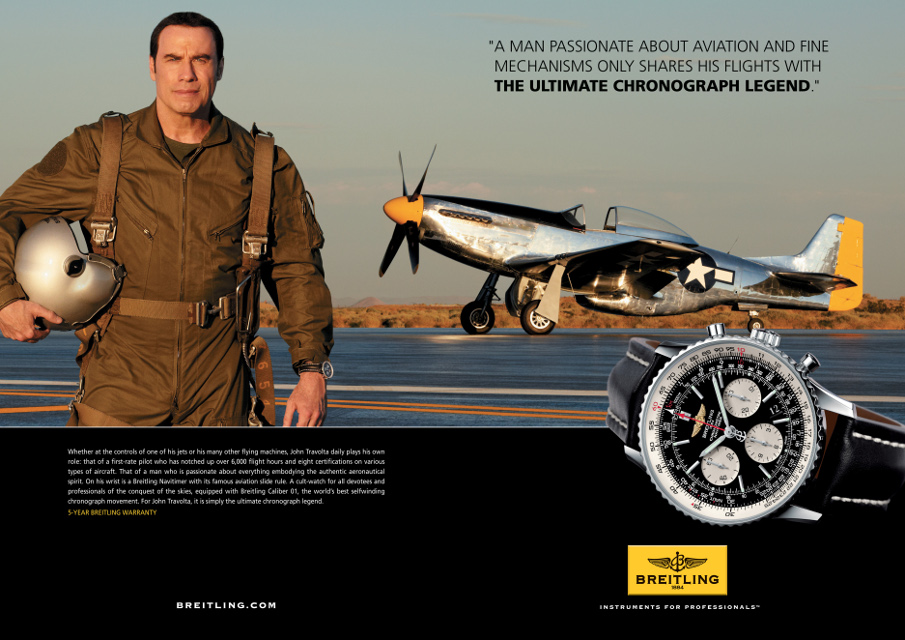Thursdays are an exciting mail day in our household — that’s when Brad gets his Sports Illustrated and I get my Entertainment Weekly — which I read cover to cover (hey, we all need our candy, right?).
I’m not much of a sports fanatic (this is a large understatement, I like to annoy Brad while he’s watching football with innocent inquiries like, “So, who’s winning the match?”), other than occasionally flipping through the Leading Off photos, I don’t pick up the SI. After Brad’s finished with it, it hangs out on the end table in the living room collecting dust and cat hair until I toss it into the recycling bin or Lily decides she wants to tear all the pages out of it.
I really shouldn’t let the images of be-helmeted men in skin-tight pants and ads for over-priced men’s wristwatches (see below) turn me off though.

I am passionate about great writing — and SI does have a lot that (despite it being on subjects I care little about). You might be wondering how I know about the writing in SI if I only look at the pictures (and then only the pictures at the beginning of the magazine). Well, every once and a while, Brad will flag me on a story he thinks crosses the sports fanatic – sports apathetic divide.
Last week, he suggested I’d like a story about the son of convicted murder and former NFL receiver Rae Carruth. I asked him what the story was about and he proceeded to outline it for me:
Carruth had conspired to kill his pregnant, girlfriend Cherica Adams, because he didn’t want the financial responsibility of another child. (He already had a son from one woman that he only paid child support for after the court told him to and he’d threatened to kill another girlfriend if she didn’t get an abortion). After being shot by an associate of Carruth’s, Adams told the 911 dispatcher that Carruth was at the scene of the shooting. While she did not survive the shooting, her unborn child was saved in an emergency C-section and is now being raised by his grandmother.
Brad described how devoted the grandmother has been to the boy — who has cerebral palsy as a result of the shooting — and about how Carruth has shown no remorse for what he did — and in fact still denies his involvement and has said he wants a relationship with his son after he gets out of prison.
I told Brad that it sounded like an interesting story and that I’d check it out.
He said I probably didn’t need to now — because he’d just told me what had happened.
I read the article anyway. Brad did a good job recounting the events — but it’s not the same as telling the story of just how unapologetic Carruth is and how, despite this, the grandmother raising her murdered daughter’s son is able to forgive the murderer.
“I’m not gonna have anything negative to say about him,” she says. “I thank him for my grandson. I thank him for my grandson.”
And — not to knock Brad’s storytelling ability (just ask him to tell you about his various haircutting experiences at Great Clips) — he didn’t really make much use of imagery like this:
“It’s late afternoon now, the heavy air draped over the Piedmont like a blanket pulled too soon from the drier …”
These days, with Twitter and Facebook and 24/7 news, you can find out what happened anywhere almost as soon as it’s happened. But that doesn’t mean you know the whole story.
Anyway, I’ll get off my “yay journalism” high horse (that’s what I was on for those who didn’t realize that “yay ice cream” and “John Mayer is a tool” aren’t my only high horses).
You should check out the story if you have a chance — even if you’re not a sports junkie. It’s not about that anyway.

